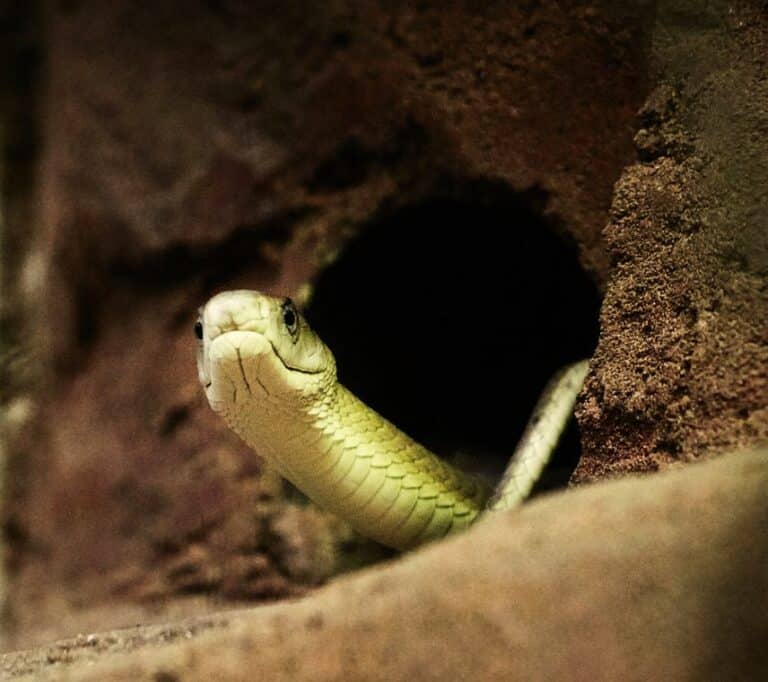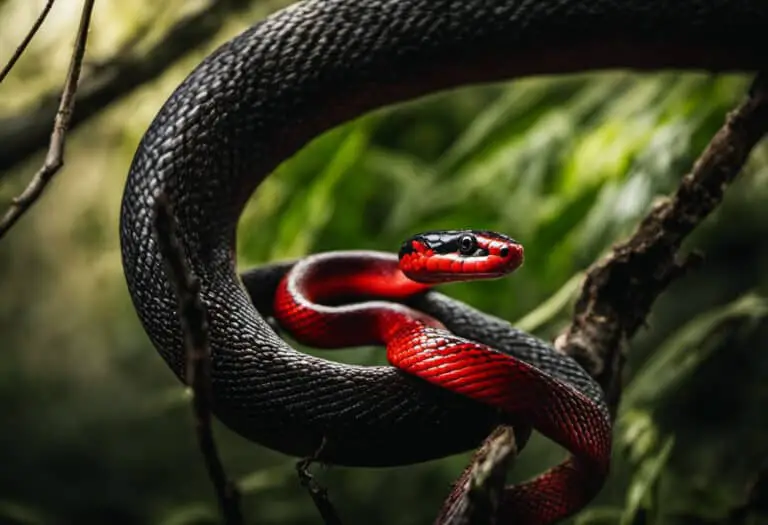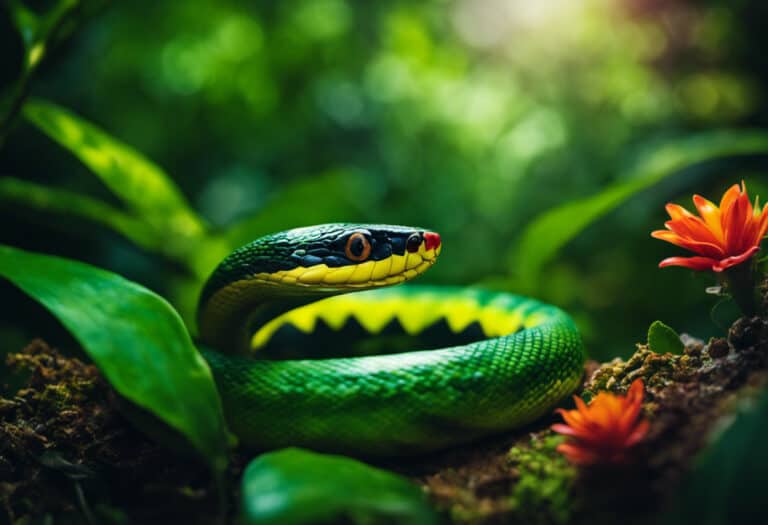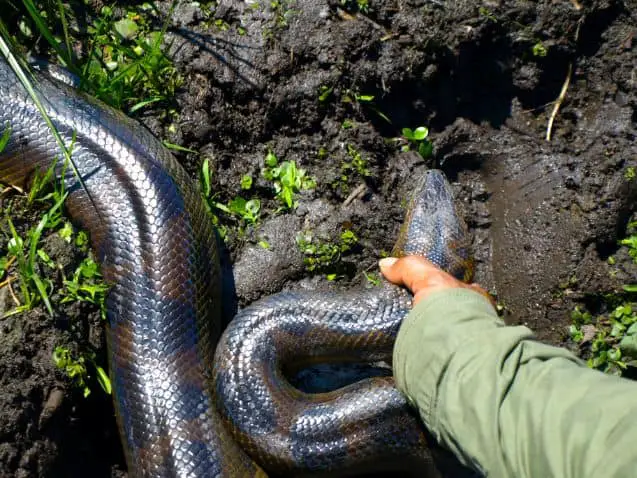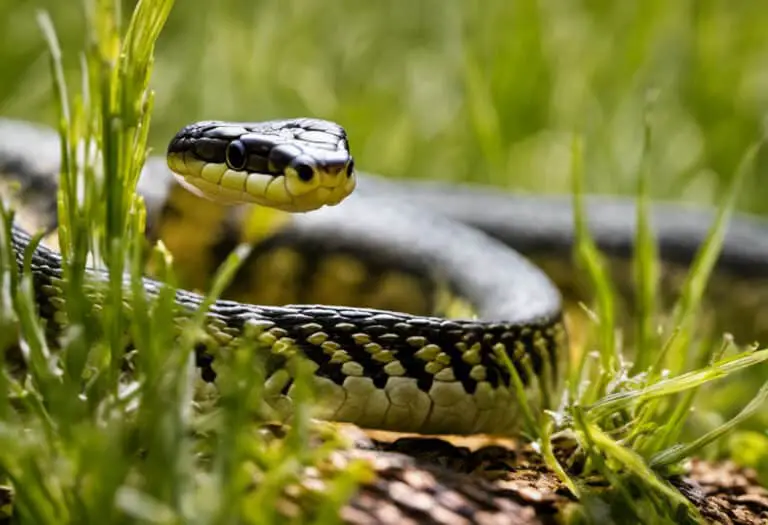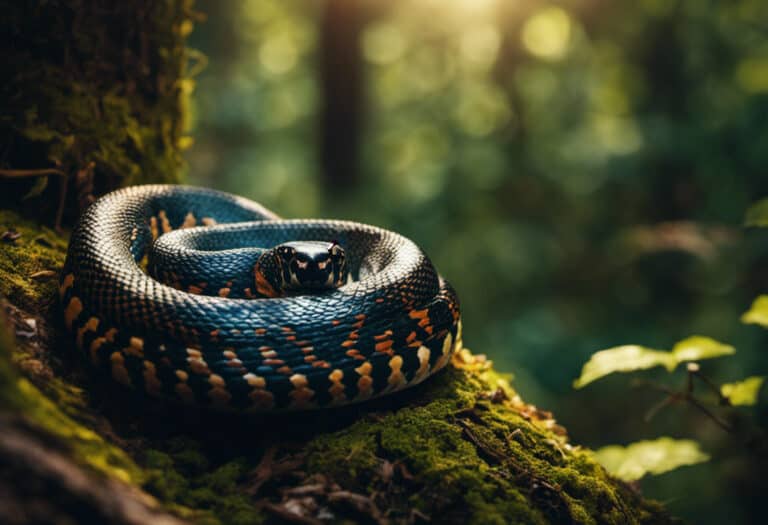What Do Smooth Green Snakes Eat?
Curious about what smooth green snakes eat? Look no further! In this article, we’ll explore their diet and provide you with all the info you need.
These vibrant snakes primarily feed on insects, with a preference for soft-bodied ones like caterpillars, spiders, moths, wax worms, and flies. They can also consume tougher exoskeleton insects like grasshoppers, but it’s best to limit those.
To ensure proper nutrition, their diet should remain diverse. We’ll also discuss their drinking habits and feeding schedule.
Keep reading to learn more!
Key Takeaways
- Green snakes mainly feed on insects such as crickets, grasshoppers, frogs, caterpillars, and snails.
- Soft-bodied insects like spiders, moths, wax worms, and flies are preferred by green snakes.
- Feeding tough exoskeleton insects like grasshoppers should be limited.
- Green snakes may soak in a shallow bowl of water but prefer to drink water droplets from plants.
Green Snakes’ Main Diet: Insects
To ensure proper nutrition, your green snake’s main diet should consist of insects such as crickets, grasshoppers, frogs, caterpillars, and snails. These insects provide the necessary nutrients for your snake’s health and well-being.
Green snakes are known for their foraging behavior, actively searching for prey during the day.
Their diet plays a crucial role in their overall health, affecting their growth, immune system, and reproductive capabilities. A diverse diet ensures that they receive a wide range of essential vitamins, minerals, and proteins.
It’s important to note that mealworms should be fed sparingly to green snakes, as they aren’t as nutritionally beneficial.
By providing a varied diet of insects, you can support your green snake’s optimal health and encourage their natural foraging instincts.
Green Snakes’ Preference for Soft-Bodied Prey
If you want to provide the best diet for your pet, it’s recommended to primarily feed them caterpillars as they’re soft-bodied and meet their nutritional needs. Green snakes benefit greatly from a varied diet that includes a range of prey items. Here are some reasons why:
- Benefits of gut loading prey for green snakes: Gut loading involves feeding the prey with nutritious food before offering it to the snake. This ensures that the snakes receive a well-rounded diet and helps prevent nutrient deficiencies.
- Importance of a varied diet for green snakes’ health: Offering a variety of prey items ensures that green snakes receive all the necessary nutrients, vitamins, and minerals. This promotes overall health and helps prevent dietary imbalances.
Drinking Habits of Green Snakes
You can replicate the natural habitat of green snakes by misting the tank’s plants daily, providing them with their preferred water source.
Green snakes may soak in a shallow bowl of water, but they prefer to drink water droplets from plants.
It is important to mimic this behavior in captivity to ensure their hydration needs are met. By misting the tank’s plants, you are offering green snakes their preferred method of obtaining water.
| Importance of Hydration for Green Snakes |
|---|
| – Hydration is crucial for the overall health and well-being of green snakes. |
| – Proper hydration aids in digestion and helps prevent issues such as constipation. |
| – It also helps regulate their body temperature and maintain proper organ function. |
| – Dehydration can lead to a variety of health problems and even be fatal for green snakes. |
| – Providing them with a constant source of water is essential for their survival. |
Feeding Habits of Green Snakes
Eating a varied diet of soft-bodied insects ensures that your green snake’s nutritional needs are met.
Green snakes primarily feed on soft-bodied insects such as caterpillars, spiders, moths, wax worms, and flies. These insects provide the necessary nutrients for their diet. Limit feeding tough exoskeleton insects like grasshoppers, as they may be difficult for green snakes to digest.
To maintain their health and well-being, it’s important to establish a feeding schedule and replicate their natural habitat.
Set a feeding schedule of once or twice a week, offering food two or three times within twenty minutes. This ensures that your snake receives enough nourishment without overfeeding.
Gut-loading prey is recommended for green snakes in captivity. This involves feeding the insects a nutritious diet before offering them to your snake, ensuring that they receive optimal nutrition.
Replicate their natural habitat by creating a comfortable environment with plenty of greenery. This encourages your snake to feel at ease and helps them thrive.
By following these guidelines and providing your green snake with a varied diet and a habitat that mimics their natural environment, you can help them maintain a healthy and balanced lifestyle.
Common Questions About Green Snakes’ Diet
Is it true that green snakes can go without food for a few weeks without any issues?
While it’s true that green snakes can tolerate short periods without food, it’s important to note that they thrive on a diverse diet.
Green snakes primarily feed on insects such as crickets, grasshoppers, frogs, caterpillars, and snails. A varied diet ensures that they receive the necessary nutrients for optimal health.
It’s recommended to feed green snakes two to three times per week, offering food two or three times within twenty minutes. This feeding schedule replicates their natural hunting habits and allows them to consume an appropriate amount of food.
Frequently Asked Questions
Are Green Snakes Venomous?
Green snakes are not venomous and can be kept as pets. Some species of green snakes, such as the smooth green snake, are not endangered. They make docile pets and their defense mechanism is blending into their environment.
Can Green Snakes Eat Fruits or Vegetables?
Green snakes do not eat fruits or vegetables. Their diet consists mainly of insects, such as crickets, grasshoppers, and caterpillars. Offering a varied diet of soft-bodied insects ensures their proper nutrition and growth.
How Often Should Green Snakes Be Offered Mealworms?
Offer mealworms to green snakes sparingly. They should primarily be fed a diverse diet of soft-bodied insects like caterpillars, spiders, moths, wax worms, and flies. Ensure optimal frequency and portion sizes for their overall nutrition and health.
Do Green Snakes Need Calcium Supplements in Their Diet?
Green snakes do not require calcium supplements in their diet, but a lack of calcium can negatively affect their health. It is important to provide them with a varied diet to ensure proper nutrition.
Can Green Snakes Eat Fish or Other Aquatic Creatures?
Green snakes, although primarily insectivorous, do not typically eat fish or other aquatic creatures. They prefer a diet of soft-bodied insects. Their hunting and feeding techniques are more suited for capturing and consuming land-dwelling prey.
Conclusion
In conclusion, the smooth green snake’s diet primarily consists of insects, with a preference for soft-bodied prey such as caterpillars and spiders.
It’s important to provide a diverse diet for these snakes, including gut-loaded prey in captivity. Understanding their drinking and feeding habits is crucial for their well-being.
Just like a finely tuned ecosystem, the smooth green snake’s diet is a delicate balance of nutrition and variety, ensuring their vibrant green color and overall health.
